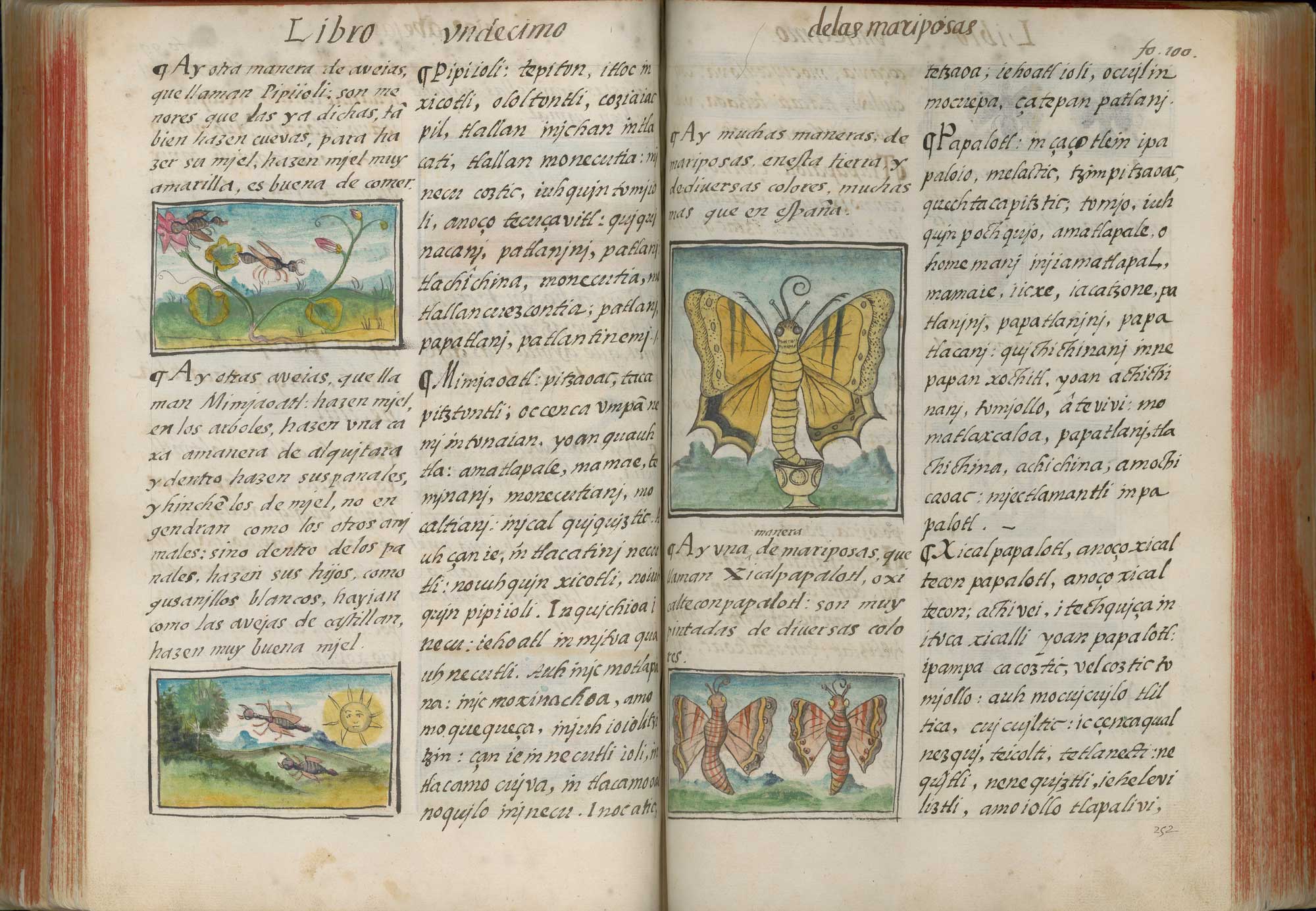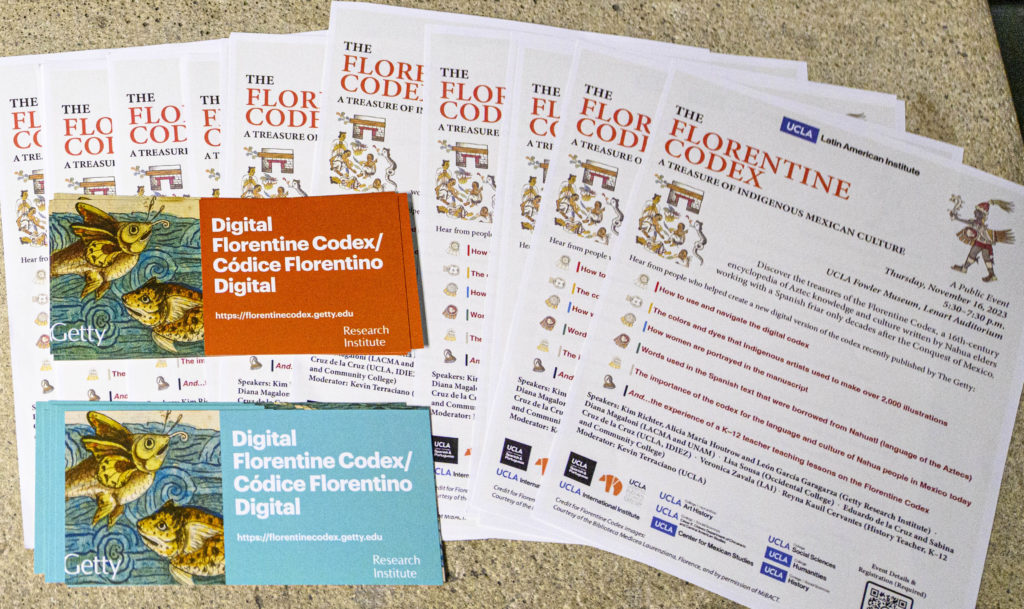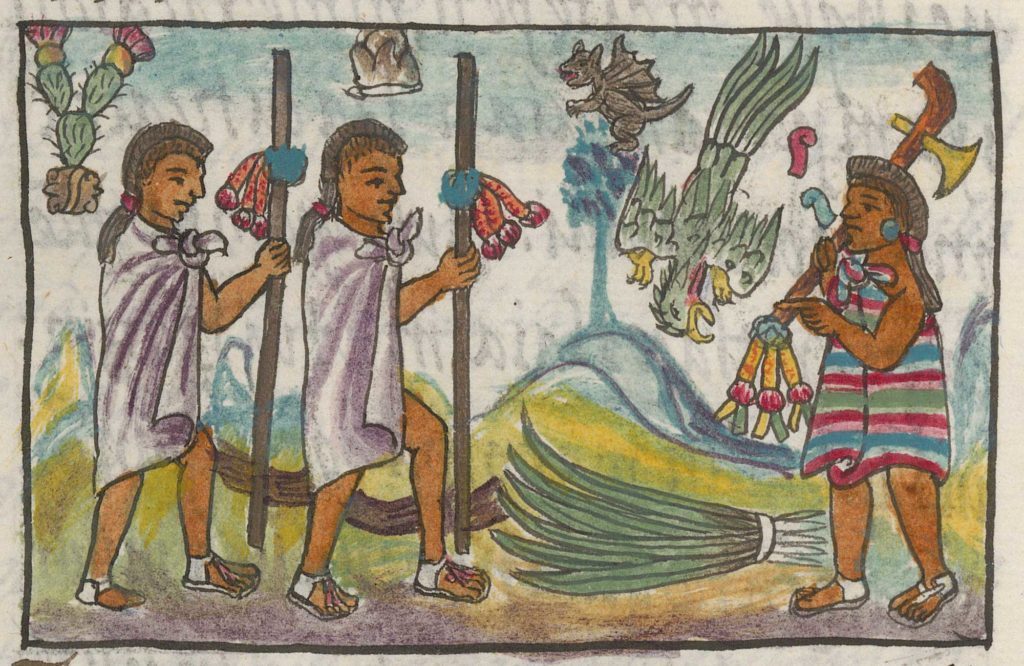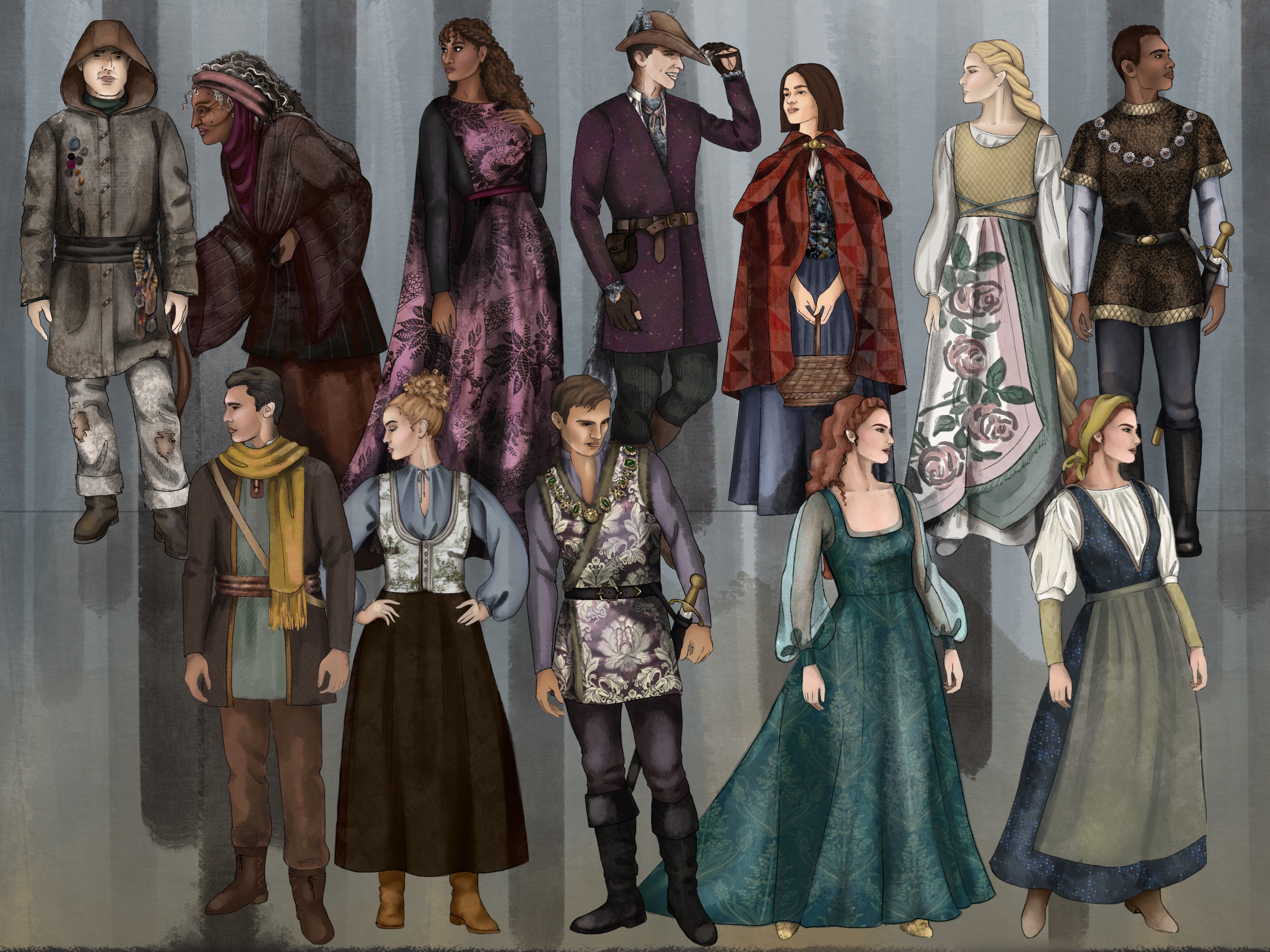UC expert-led digitized version of Florentine Codex allows access to Nahua culture

Insects in Book 11 of the Florentine Codex. (Courtesy of the Biblioteca Medicea Laurenziana, Florence, and by permission of MiBACT)
By Vivian Stein
Nov. 25, 2023 1:48 p.m.
This post was updated Nov. 28 at 5:56 p.m.
UCLA and Getty Research Institute scholars recently released a digitized version of the Florentine Codex, a 16th century indigenous Mexican history record, making it a publicly accessible resource for research across the globe.
They presented the codex at a conference, titled “The Florentine Codex: A Treasure of Indigenous Mexican Culture,” on Nov. 16 at the Fowler Museum. The virtual codex is an encyclopedia of early Nahua culture and was compiled by Nahua collaborators, including writers and illustrators. The manuscript is nearly 2,500 pages long and contains 12 books, each centered on different cultural figures and aspects of Nahua culture. The digital version of the codex contains English and some Spanish translations alongside the original text, which was written in Nahuatl – the language of the Nahua – and Spanish.
“This is probably the most amazing manuscript in the early modern American world (and) the history of the Americas,” said Kevin Terraciano, professor and chair of the Department of History. “It’s unique in that it’s completely bilingual – Nahuatl and Spanish – (and) has 2,500 images. (There’s) nothing like it.”
Terraciano added that accessibility of the codex to Nahua communities was an important focus of the project. The original manuscript is housed in the Biblioteca Medicea Laurenziana in Florence, Italy, which Terraciano said was not easily available for Nahua individuals.

This virtual resource also has a keyword system, which allows a word of interest to be typed into a search bar to yield all results in the text or as part of images.
The process of creating this digital rendition has been eight years in the making, Terraciano said. He added that the project began after he hosted a conference on the Florentine Codex in 2015 with Jeanette Peterson, a UCLA alumnus and then-UC Santa Barbara professor of art history. The conference, titled “Visual and Textual Dialogues in Colonial Mexico and Europe: The Florentine Codex,” resulted in the idea to digitize the manuscript and create a book on the codex, which the duo published in 2019, he said.
Thursday’s conference to celebrate the codex’s release featured presentations from speakers involved in the project. Moderated by Terraciano, the event dove into how to use the codex, brought up its representation of women’s roles in Nahua society and explained details within the illustrations. It also discussed how it can be used in new research and an educational context.
“There’s so much opportunity for research and scholarship at every level,” Terraciano said. “Oftentimes, the history of Mesoamerica is not included in the K-12 classrooms in California. There’s more of an emphasis on Rome, Greece, Egypt and Mesopotamia, and there’s so much rich material for bringing in the history of the Americas. So, there’s a lot of opportunity here.”

Reyna Kauil Cervantes, a K-12 world history teacher and faculty member at the Los Angeles Trade Technical College, spoke at the conference about ways the Florentine Codex can be analyzed in a K-12 classroom setting. She said asking questions about how indigenous culture is similar to or different from ways of life today, creating STEM projects and developing image analysis are all beneficial ways to use the codex in academic settings.
Kauil Cervantes said during the event that she encourages wondering as a key step for children to understand the codex.
“That’s the beautiful thing,” Kauil Cervantes said. “There’s still so much unanswered. What do our students still wonder? What do they still want to know, whether it’s about everyday Nahua life or about indigenous history in general?”
León García Garagarza, a member of the project’s research team and UCLA alumnus, said he hopes the project will help English readers start to familiarize themselves with indigenous languages.
“(I hope) they may appreciate the enormous influence that these indigenous languages had in the evolution of European languages,” García Garagarza said.
Eduardo de la Cruz and Sabina Cruz de La Cruz, project research consultants and instructors of Nahuatl in the Spanish department at UCLA, said the codex can help empower the next generation of indigenous individuals. Both de la Cruz and Cruz de La Cruz, who are native to small towns in eastern Mexico, said they grew up being taught in school that Nahuatl was not a proper language or tool of communication and were pushed to speak Spanish instead.
Cruz de La Cruz said she hopes the codex will spark more conversations about this underrepresented language. She said since Nahuatl is an endangered language, the codex will help it survive and get passed down to the next generation – like with her three-year-old daughter, who has begun to speak phrases in Nahuatl.
Peterson said previous research has primarily been conducted on Spanish historical figures, but the codex is able to highlight many influential Nahua people as well.
“The richness of the indigenous culture, its sophistication, the complexity of the ideas, their language and how poetic it can be – all of those dimensions of a culture come out in the Florentine Codex,” Peterson said.






